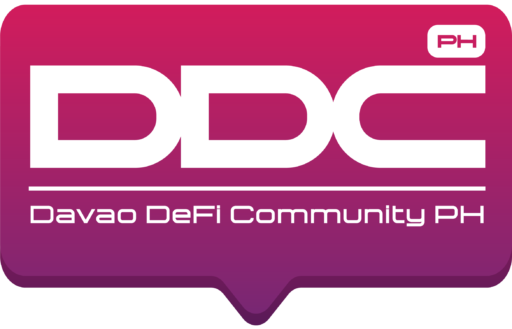Bridge the Gap: Collaborating Traditional Finance (TradFi) and Decentralized Finance (DeFi)
Abstract:
This research paper explores the significance of bridging the worlds of Traditional Finance (TradFi) and Decentralized Finance (DeFi) through collaboration. The paper investigates the problem of fragmentation between these two financial ecosystems and presents a comprehensive analysis of the potential benefits, challenges, and methods for achieving meaningful integration. By examining the existing literature and employing empirical research methods, this study seeks to provide insights into how a harmonious collaboration can reshape the future of finance, creating a more inclusive and efficient financial system.
Problem Statement:
The financial landscape is undergoing a transformative shift with the emergence of Decentralized Finance (DeFi) platforms, which promise greater financial inclusion, efficiency, and accessibility. However, the coexistence of Traditional Finance (TradFi) and DeFi has often resulted in fragmentation and missed opportunities for synergy. This paper aims to address the following problems:
- The fragmented nature of the financial industry, where TradFi and DeFi operate as separate, disconnected ecosystems, limits the potential benefits for both users and investors.
- Lack of legislation and regulatory clarity, as well as compliance standards hinder the seamless integration of DeFi with the existing financial infrastructure.
- The risk of financial exclusion, as not all individuals have access to DeFi platforms, while TradFi struggles to adapt to evolving customer demands.
Background Information:
The financial sector has witnessed a rapid evolution over the past decade, driven by the advent of blockchain technology and smart contracts. DeFi, a subset of the cryptocurrency and blockchain space, has grown into a multi-billion-dollar industry, offering a range of financial services such as lending, borrowing, trading, and yield farming, all built on decentralized protocols. Despite its potential, DeFi operates in a siloed manner, detached from the traditional banking system. This disconnect between TradFi and DeFi has led to inefficiencies, regulatory challenges, and missed opportunities.
Review of Related Literatures:
- China’s Digital Currency Electronic Payment (DCEP):
- Review China’s experience with the development and implementation of its CBDC, the Digital Currency Electronic Payment (DCEP). Analyze its impact on financial inclusion, payments, and the broader economy.
- https://boxmining.com/dcep/#:~:text=DCEP%20is%20a%20Centralized%20Currency,and%20control%20of%20the%20currency.
- Estonia’s Estcoin Proposal:
- Examine Estonia’s proposal for Estcoin, a government-backed cryptocurrency. Investigate the motivations behind the proposal and the challenges it faced, including regulatory and geopolitical considerations.
- https://futurism.com/estonia-revealed-three-uses-proposed-national-cryptocurrency
- Stablecoin Projects Like USDC and USDT:
- Explore how stablecoins like USD Coin (USDC) and Tether (USDT) are being used globally for cross-border payments, remittances, and as a bridge between traditional financial systems and DeFi.
- https://www.blockchain-council.org/cryptocurrency/list-of-stablecoins/
- DeFi Projects and Yield Farming:
- Investigate the use of stablecoins within decentralized finance (DeFi) platforms for lending, borrowing, and yield farming. Assess the risks and benefits associated with these applications.
- https://www.techopedia.com/definition/defi-yield-farming#:~:text=Yield%20farming%20is%20a%20way,be%20financial%20or%20non%2Dfinancial.
- Regulatory Approaches in Different Countries:
- Compare and contrast regulatory approaches to CBDCs and stablecoins in various countries, such as the United States, the European Union, and Japan. Analyze the implications of different regulatory frameworks.
- https://www.investopedia.com/cryptocurrency-regulations-around-the-world-5202122
- Impact on Financial Inclusion:
- Examine studies and use cases highlighting how CBDCs and stablecoins can improve financial inclusion by providing access to banking and payment services for unbanked or underbanked populations.
- https://www.adb.org/sites/default/files/publication/871281/asia-pacific-financial-inclusion-forum-2022.pdf
- Remittances and Cross-Border Payments:
- Investigate how CBDCs and stablecoins can streamline remittances and cross-border payments, reducing costs and transaction times.
- https://timesofindia.indiatimes.com/blogs/voices/blockchain-tech-to-alter-cross-border-payments/
- Digital Asset Custody:
- Explores the role of custodians in enhancing the security and accessibility of digital assets, particularly in the context of institutional investors and financial institutions
- https://cointelegraph.com/news/south-korean-hana-bank-enters-crypto-custody-business-with-bitgo
- Challenges in Auditing and Security:
- Explore research on auditing smart contracts in DeFi platforms, highlighting vulnerabilities and security concerns. Discuss the importance of independent audits and best practices.
- https://www.linkedin.com/pulse/ensuring-security-reliability-importance-smart-contract-pankaj-yadav/?trk=article-ssr-frontend-pulse_more-articles_related-content-card
Methods:
1. CBDC and Stablecoin Integration:
- Suggests the creation of a CBDC by the Bangko Sentral ng Pilipinas (BSP) to facilitate various financial activities, such as loans, banking, payments, and compliance procedures (KYC/AML).
- Proposes the introduction of a “Peso1 Stablecoin” pegged to the Philippine Peso to support DeFi integration and enable on-ramp/off-ramp services for users.
2. Utilizing CBDC and Stablecoins:
- Envisages CBDC being used for daily economic transactions and traditional financial services, thereby circulating within the economy.
- Sees the BSP-supported Stablecoins being used as a bridge or instrument to facilitate DeFi participation.
3. Regulatory Measures:
- Advocates for rigorous auditing of smart contracts, ensuring transparency and security.
- Suggests involving at least three independent smart contract auditors to certify projects and companies in compliance with BSP guidelines.
4. Agile Development Team:
- Recommends the establishment of an Agile Development team to manage these projects effectively.
- Calls for the hiring of consultants, system architects, Scrum Masters, and project managers to oversee project execution.
- Emphasizes the importance of involving academia to provide young developers and ensure project continuity.
5. Diverse Expertise:
- Highlights the need to incorporate professionals with expertise in cryptography, economics, and science into top management roles.
- Envisions collaboration with economic and tech agencies that share similar goals of modernizing the financial system.
6. Collaboration:
- Advocates for collaboration with other governmental and non-governmental agencies to collectively overhaul and optimize the financial system.
- Promotes the idea of creating a neutral ground for fostering innovation and improvement in the digital financial space.
ON-GOING RESEARCH Exploring Why KoreaOne is going to open its regulations to Crypto Platforms in October of 2024

